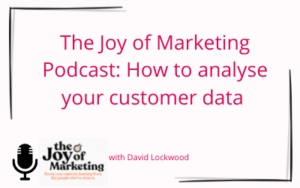While businesses have invested time and effort in digital marketing, Conversion Rate Optimisation (CRO) is often overlooked. As the pandemic has accelerated the digitisation of companies, traditional catalogue-led brands have been rethinking their businesses and taking a new look at their channels to market.
When it comes to effective CRO, multi channel retail brands should consider the following key factors to develop a successful approach.
Get the basics right
Many brands are dancing with CRO but aren’t adopting a strategic approach. Even if a business just gets the basics right, it puts them in a stronger position than most brands that carry out no optimisation. But as these basic best practices become the norm, sophisticated businesses should be adopting more sophisticated approaches to drive better results.
Measure what matters
A significant problem with many CRO efforts is they track the wrong metrics. And if you’re focusing on improving the wrong metric, not only is there an opportunity cost, but it can hurt your business and have a detrimental impact on sales.
While there’s no single ‘magic metric’ to understand success – it’s dependent on the business goal – it’s critical to identify the right set of KPIs. And while monitoring a metric like conversion is important, your goal must be to focus on transaction volumes, customer repeat rates and sales.
Don’t fixate on conversions
It’s vital to remember conversion rates are not positively correlated to sales, and increased conversions are not necessarily beneficial. If your rates are high but you’re converting low-quality consumers, you could be delivering short term value but at the expense of the long-term profitability. And the current economic situation is seeing many businesses face falling conversion rates while their average order values increase.
Embrace the losses, not just the wins
Good CRO requires focusing less on rolling out “winning” features and more on suppressing “losing” ones. Lessons learnt from observing world-class teams show that for every 10 tests they carry out, up to three will work: the rest will have a neutral or negative impact. But every negative result brings a vital insight. Companies must change their mindset and embrace failure in order to learn. Fostering a culture of experimentation is essential for successful CRO.
Test, test, test
The key to better performance is testing, and those companies that consistently test outperform those that don’t. Testing ensures you move forward, make better decisions and it’s central to growth.
Any effective testing programme will never identify one change that dramatically impacts results but is built on uncovering small incremental gains. If a test shows double-digit improvement, investigate further as it’s likely to be too good to be true. So ensure you have an ideation process in your business that allows test ideas to be constantly generated. And make sure each test runs for two weeks and a maximum of four. Continuing with something that’s not working means you’re foregoing the opportunity cost of testing something that does.
If you’re looking to develop the effectiveness of your digital marketing, get in touch with us at hello@the tapestryagency.com, and we’ll be happy to chat with you.




